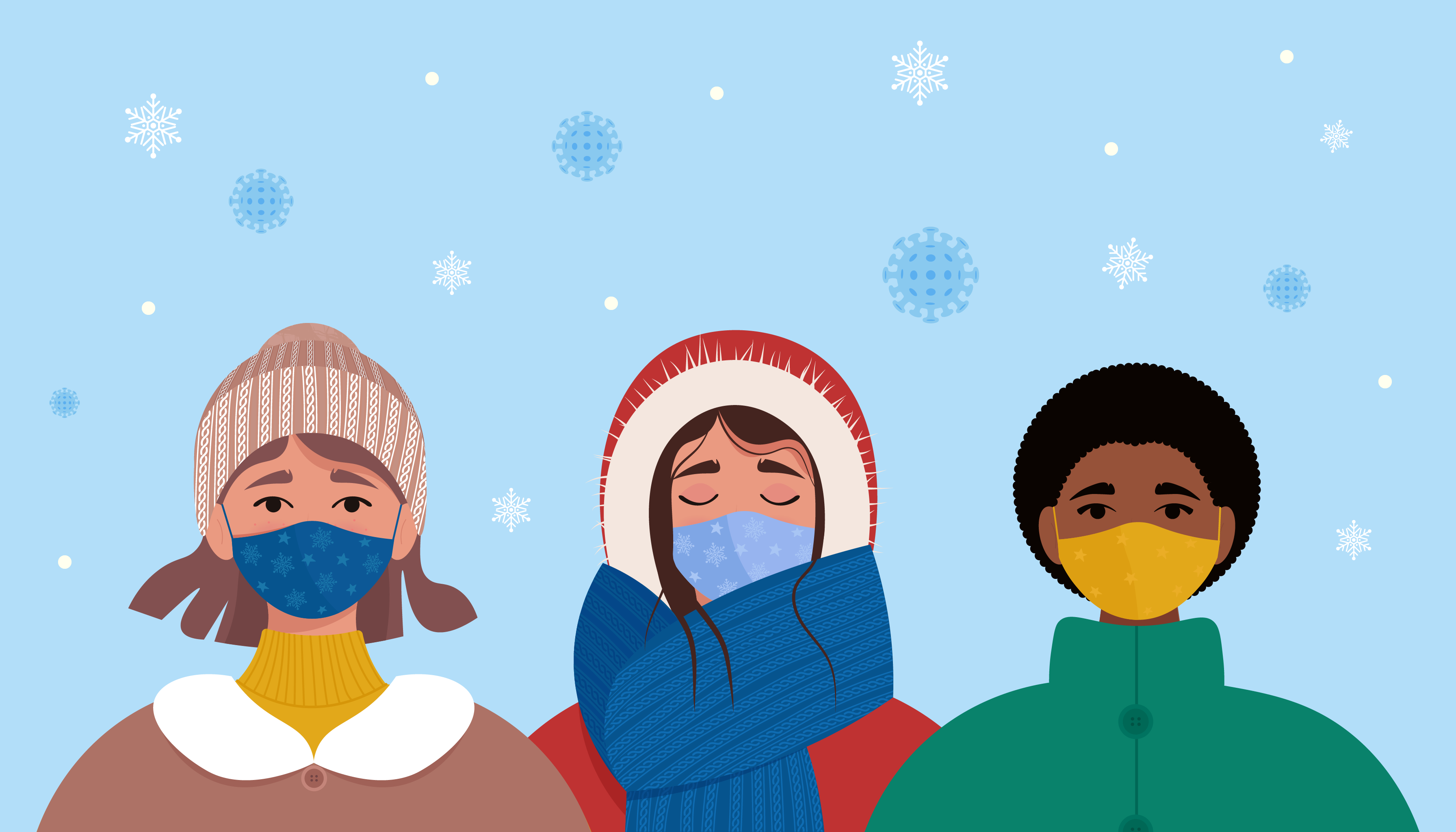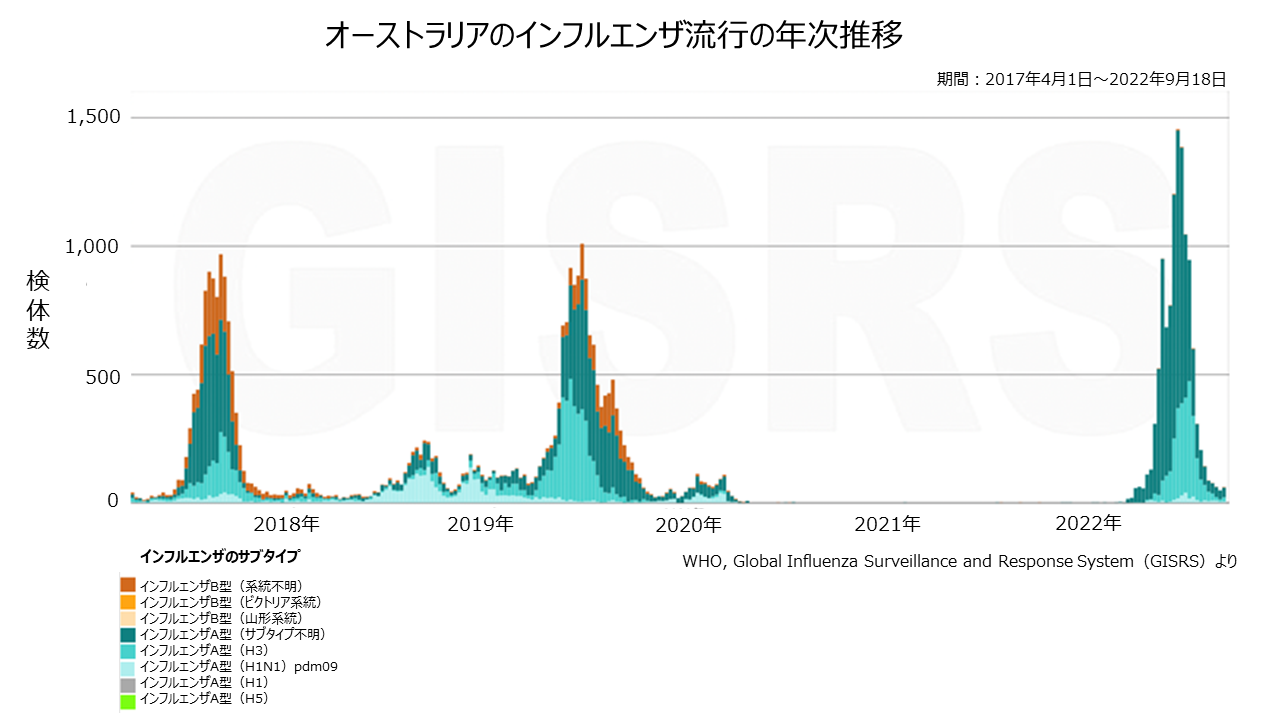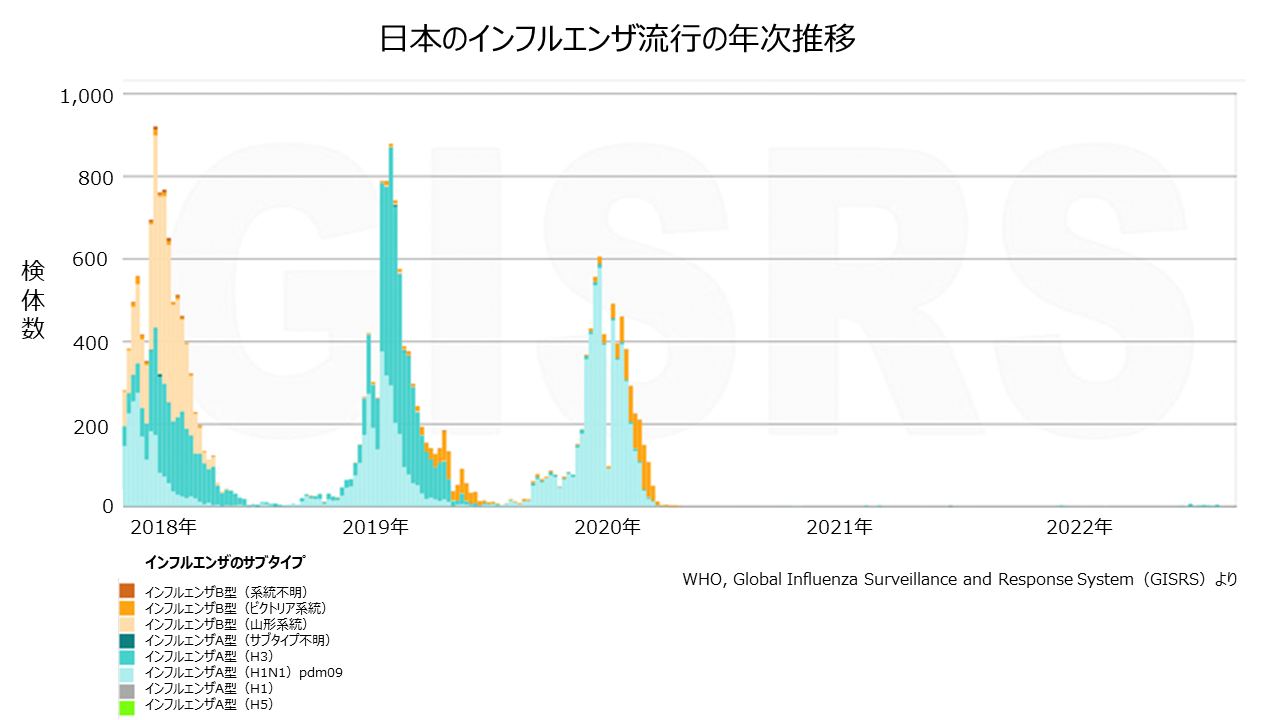
Release date: 2022.10.03
Although the number of people infected with the new coronavirus continues to decline, there are concerns about simultaneous epidemics with influenza from autumn to winter. One indicator for predicting the flu epidemic this winter is the infection situation in Australia, whose season is opposite to that in Japan.
The infection situation in Australia in the southern hemisphere, where the season is reversed from Japan, is one indicator for predicting the epidemic in Japan. The number of influenza patients in Australia this winter was low in 2020 and 2021, but in 2022, infections began in April, which corresponds to autumn, and in June, which corresponds to the beginning of winter, the number of cases increased rapidly, surpassing that of 2019. Since April, the number of weekly influenza reports has exceeded the average for the past five years. The reasons for this include: (1) the number of people infected with influenza decreased during the past two seasons, when infection control measures were thoroughly implemented due to the corona epidemic, resulting in a decline in herd immunity; can be mentioned.
In the Australian epidemic, many Hong Kong type A were detected, and it is said that this type may become mainstream in Japan this winter as well. It is known that influenza-associated deaths and hospitalizations will increase when Hong Kong type A becomes prevalent.

Japan, like Australia, has not seen an influenza epidemic in the past two years, and the number of patients has been overwhelmingly low. Therefore, once an infection occurs, there is a risk that it will become a major epidemic throughout society. In addition, this year, the possibility of an increase in influenza has been pointed out due to the increase in viral infections other than corona, such as respiratory syncytial virus and hand, foot and mouth disease.
An expert organization that advises governments on corona measures has expressed concern about the possibility of a simultaneous epidemic of corona and influenza over the year-end and New Year holidays.

For this reason, the Japanese Association for Infectious Diseases recommends that as many people as possible, including children and pregnant women, be proactively vaccinated against influenza this season, except for those who cannot be vaccinated for special reasons. In particular, those who need the vaccine are those aged 65 and over, children under the age of 5, people with chronic diseases such as the heart and lungs, people undergoing treatment for malignant tumors, and those who are highly obese. Influenza vaccines are effective for 2 weeks to 5 months after vaccination.
The government is a policy to recommend the simultaneous vaccination of the new corona and influenza vaccine. It has been reported that simultaneous vaccination with the new coronavirus vaccine and influenza vaccine is as effective (effect on antibody titer) and safe (effect on side reactions) as compared to vaccination alone. I'm here. In addition, it is said that it is necessary to keep an interval of 13 days or more for simultaneous vaccination with the new coronavirus vaccine and vaccines other than influenza vaccine.
MEDIUS Group is developing a business centered on the sale of medical equipment. We (Medical + us) involved in medical care also want to play the role of an information source (Media) that delivers useful information for the medical field and people's healthy tomorrow.